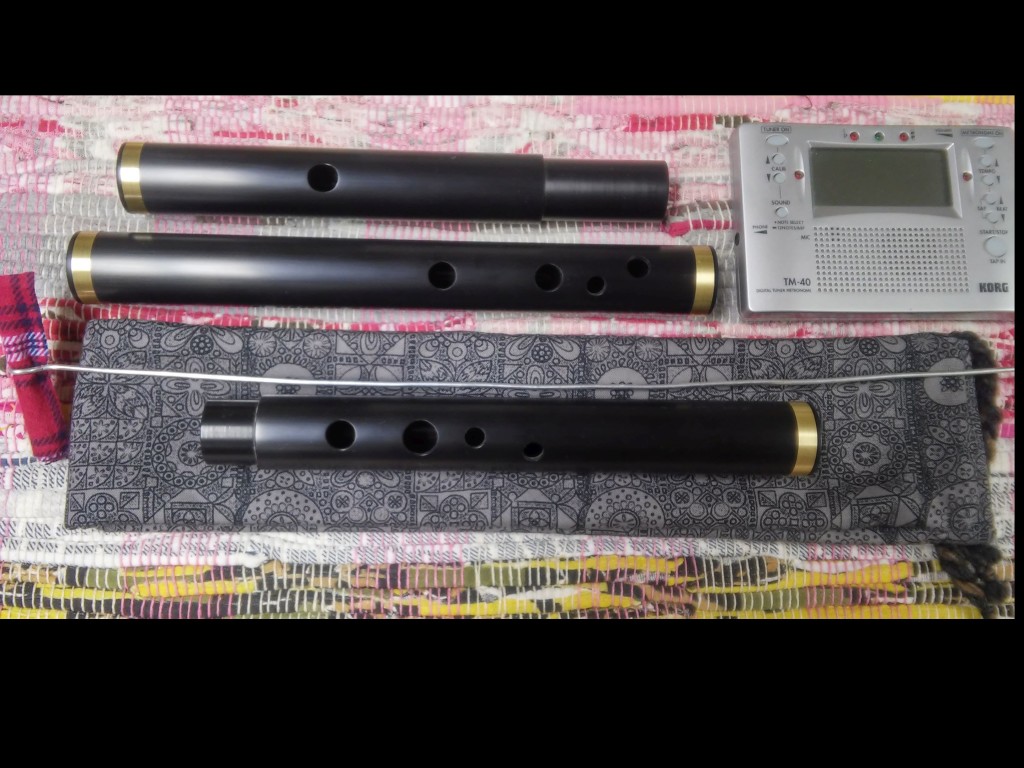I am introducing a new flute in my offerings of pvc open-hole Irish flutes, a 3-piece, 10-hole chromatic low D flute. The flute is identical to my standard 3-piece, 6-hole low D flute, except that it also has two additional finger holes and two thumb holes.
The standard 6-hole low D flute plays a diatonic (do, re, mi, fa, so, la, ti, do) major scale: D, E, F, G, A(440 hertz), B, C#, D (the octave). Missing from the 12-tone scale are: D#(Eb), F#, G#, Bb, and C natural. Unfortunately, the D# cannot be played well on a standard size low D flute without having a key. D# can be approximated by half-holing.
Thus, without half-holing or cross-fingering, with the exception of the D# (Eb) note (mentioned before), all of the remaining notes of the 12-tone chromatic scale can be played on the 10-hole flute. This allows you to play many melodies that are difficult or not possible on a 6-hole flute.
It should be mentioned that it isn’t easy to manage 10 holes, especially when you are accustomed to 6 open holes. But if you are looking for a challenge, this certainly is one. One saving feature of this flute is that if you get tired of having to manage all ten holes, one or more of the extra four chromatic holes can be covered with tape, letting you manage only the holes that you plan to use in the music you are playing. If you tape-over all four of the chromatic holes, you have your old standard 6-hole flute back again. I presently am of the opinion that the 10-hole low D flute is too difficult to play and would be a problem for me and my customers. However, leaving out the small hole for the left-hand ring finger, the left hand of the flute is identical to a conventional 6-hole flute, with the addition of the C natural thumb hole, which doesn’t seem to be a problem for most people, especially those accustomed to playing a concert flute. This 9-hole flute is much easier to play, and the missing chromatic Bb note can easily be played by a cross-fingered X(TX)OX (TX)XXXO. (TX) = thumb hole covered. Like I mentioned, the playable 9-hole flute can be had by taping over one finger hole of the left hand in the 10-hole flute, or I will sell a 9-hole flute for $105
I have also introduced a 2-piece, tunable 10-hole chromatic smaller-bore flute in G. Because of the smaller size and smaller finger holes, I think that it is easier to manage than the larger 10-hole low D flute The finger hole layout for the small G flute is exactly the same as the larger low D flute and is played the same. The 10-hole chromatic low D flute is pictured below. The two thumb holes are not visible in the photo.





